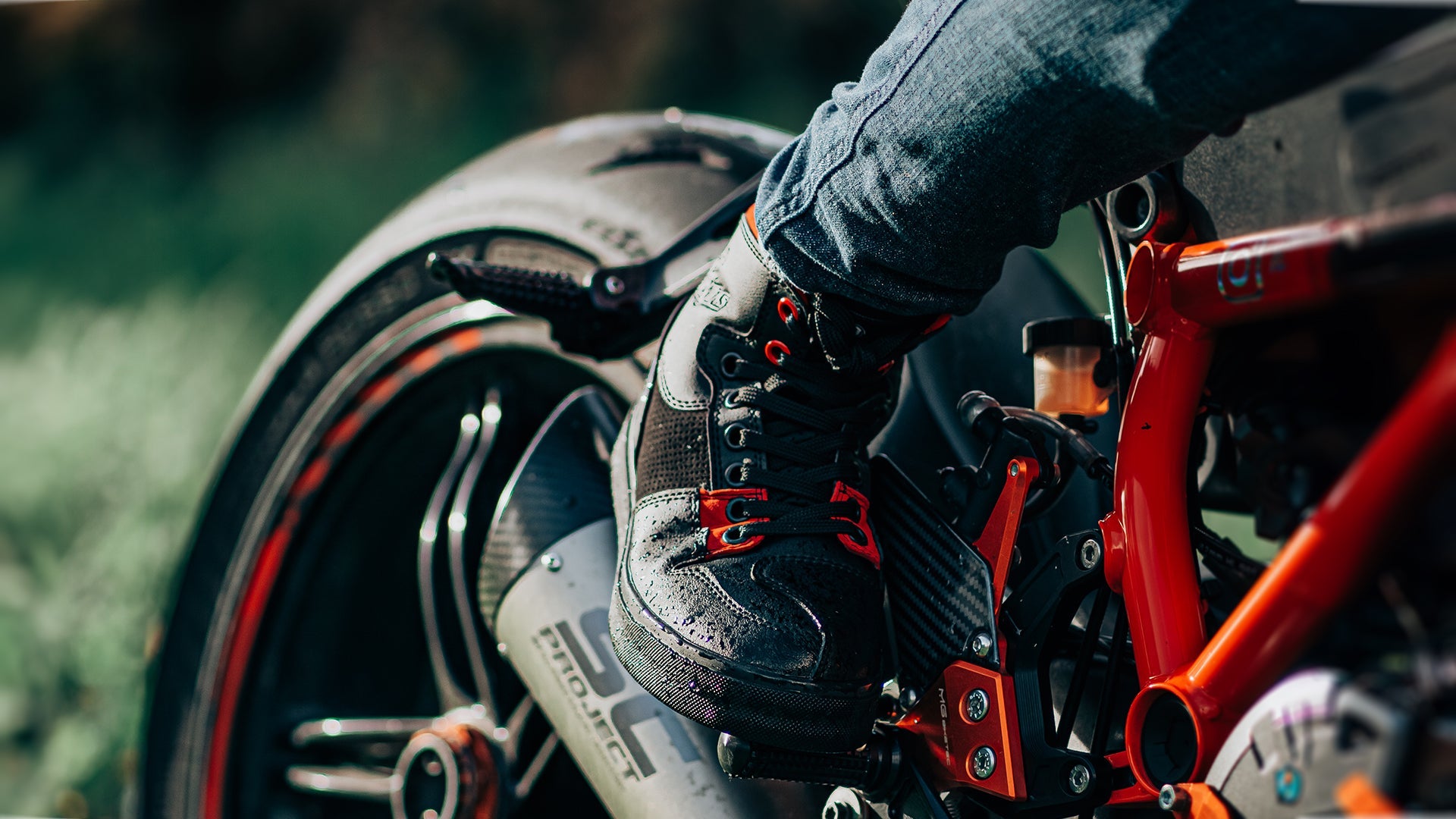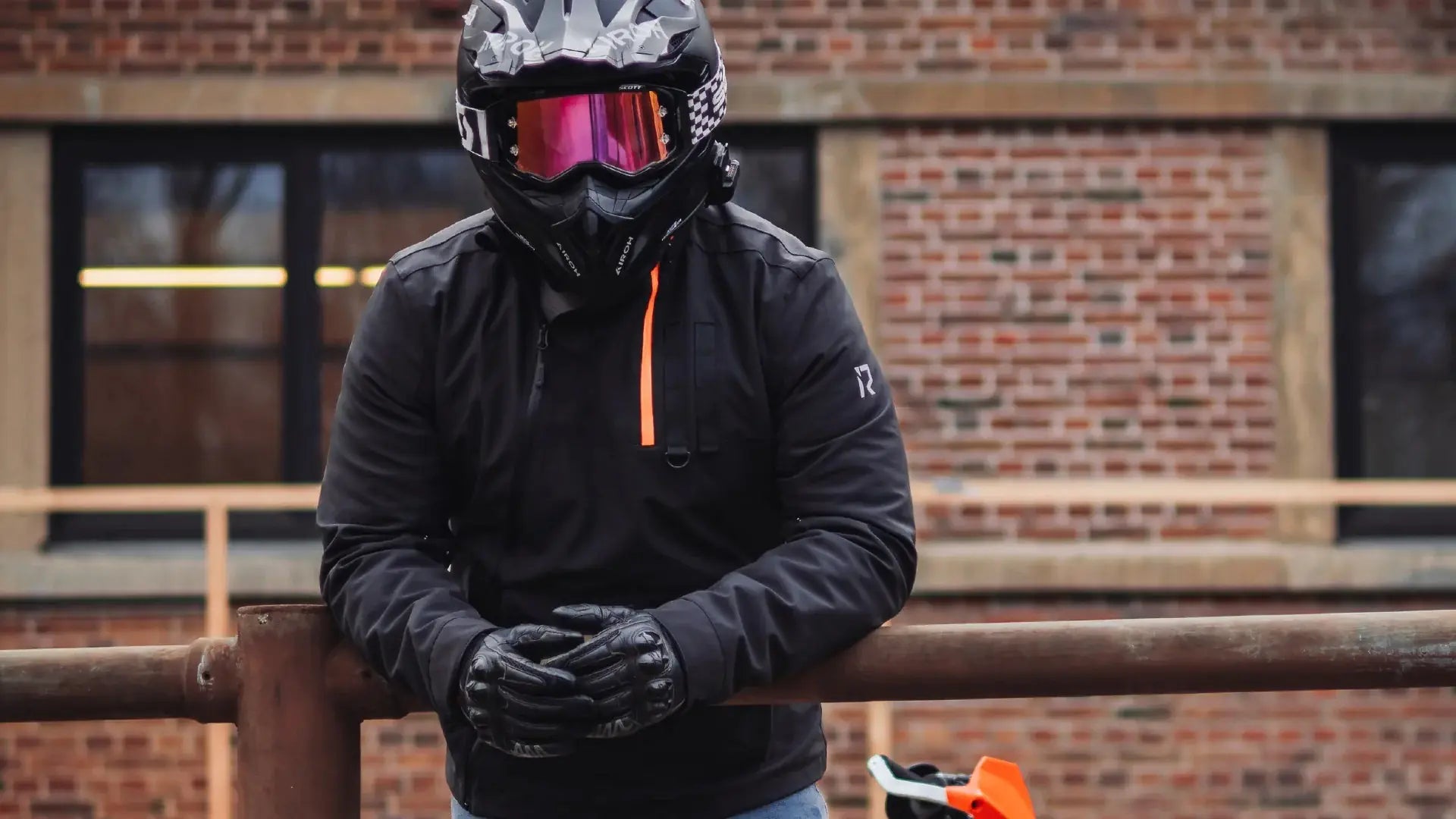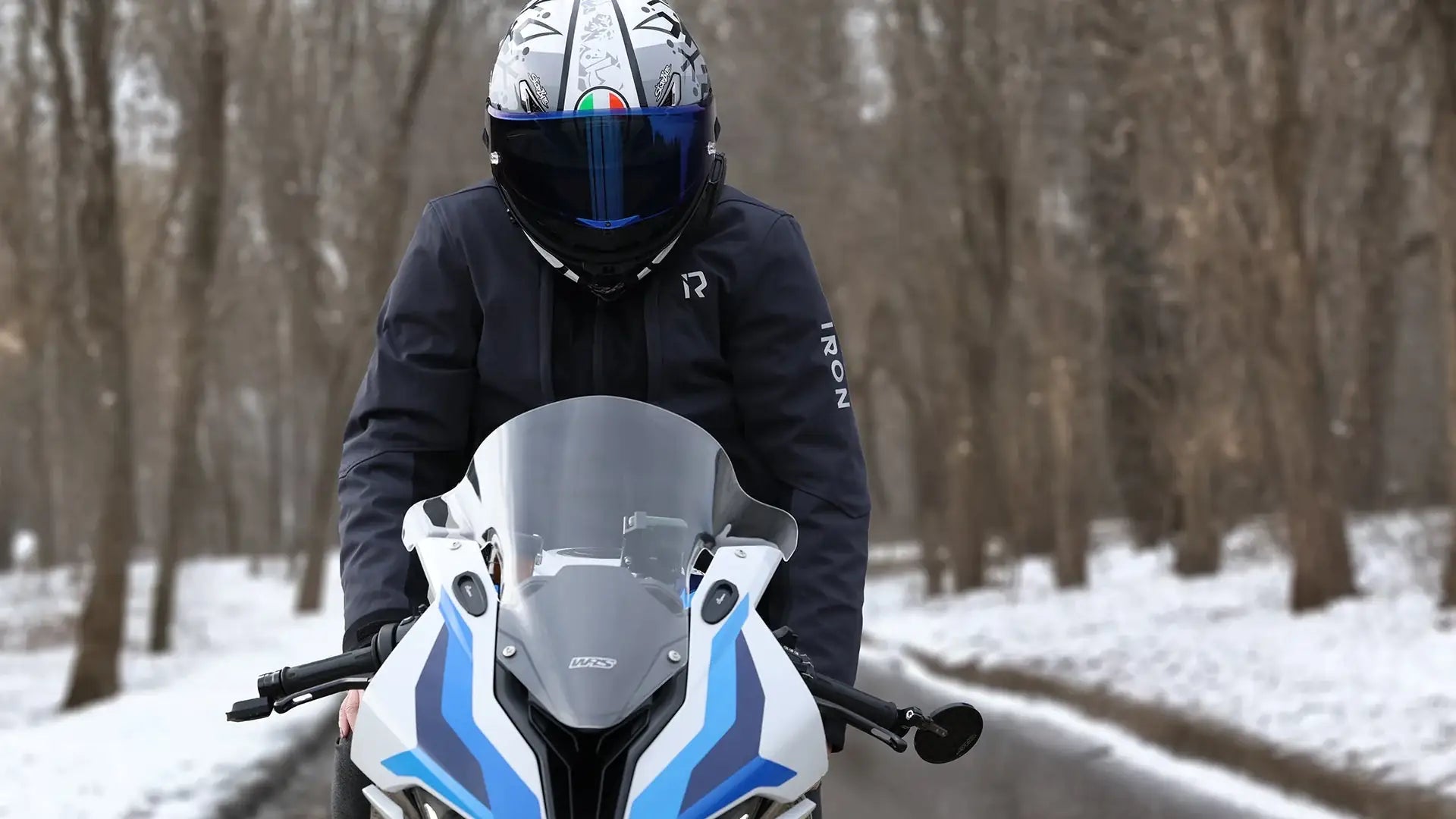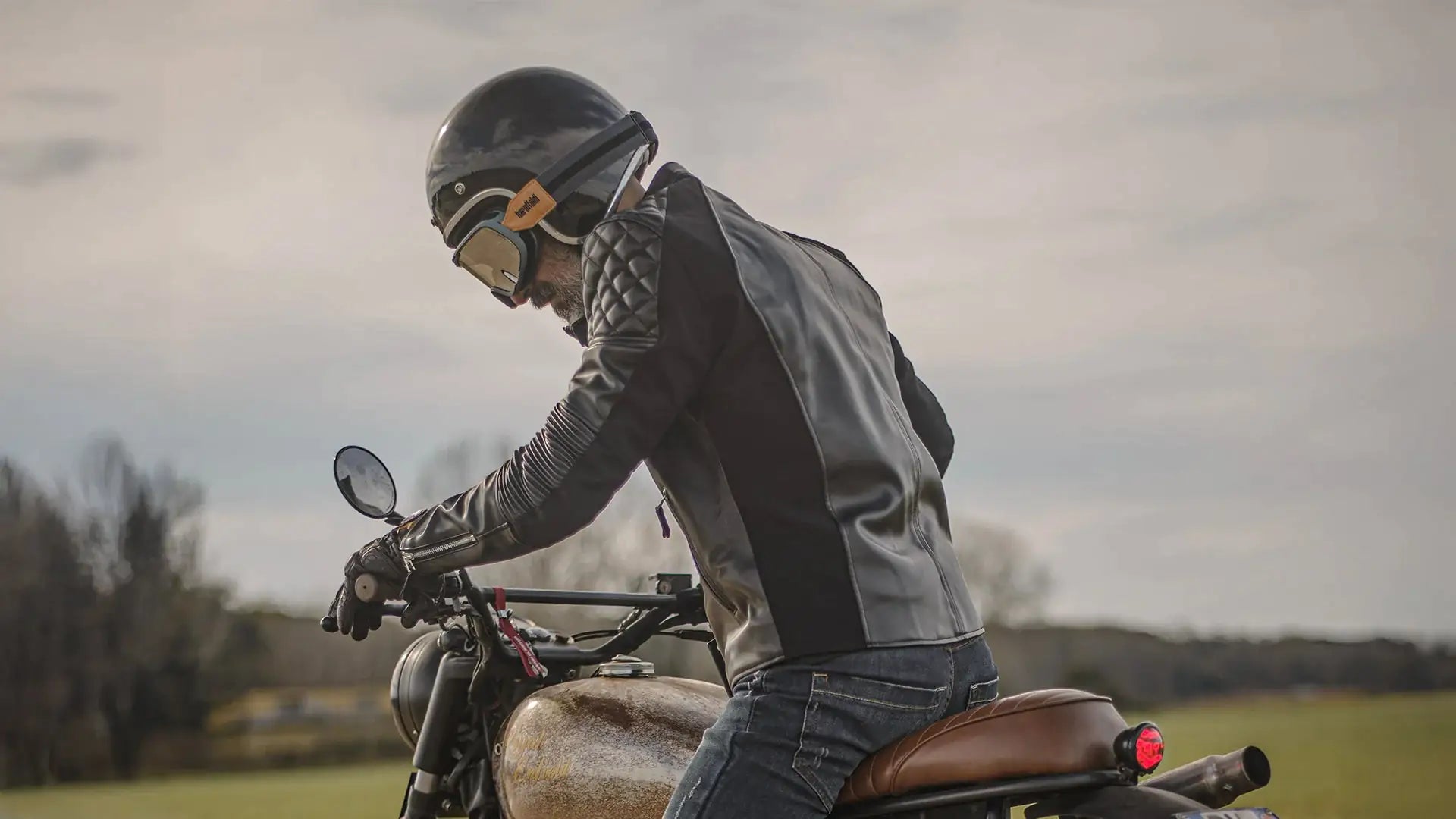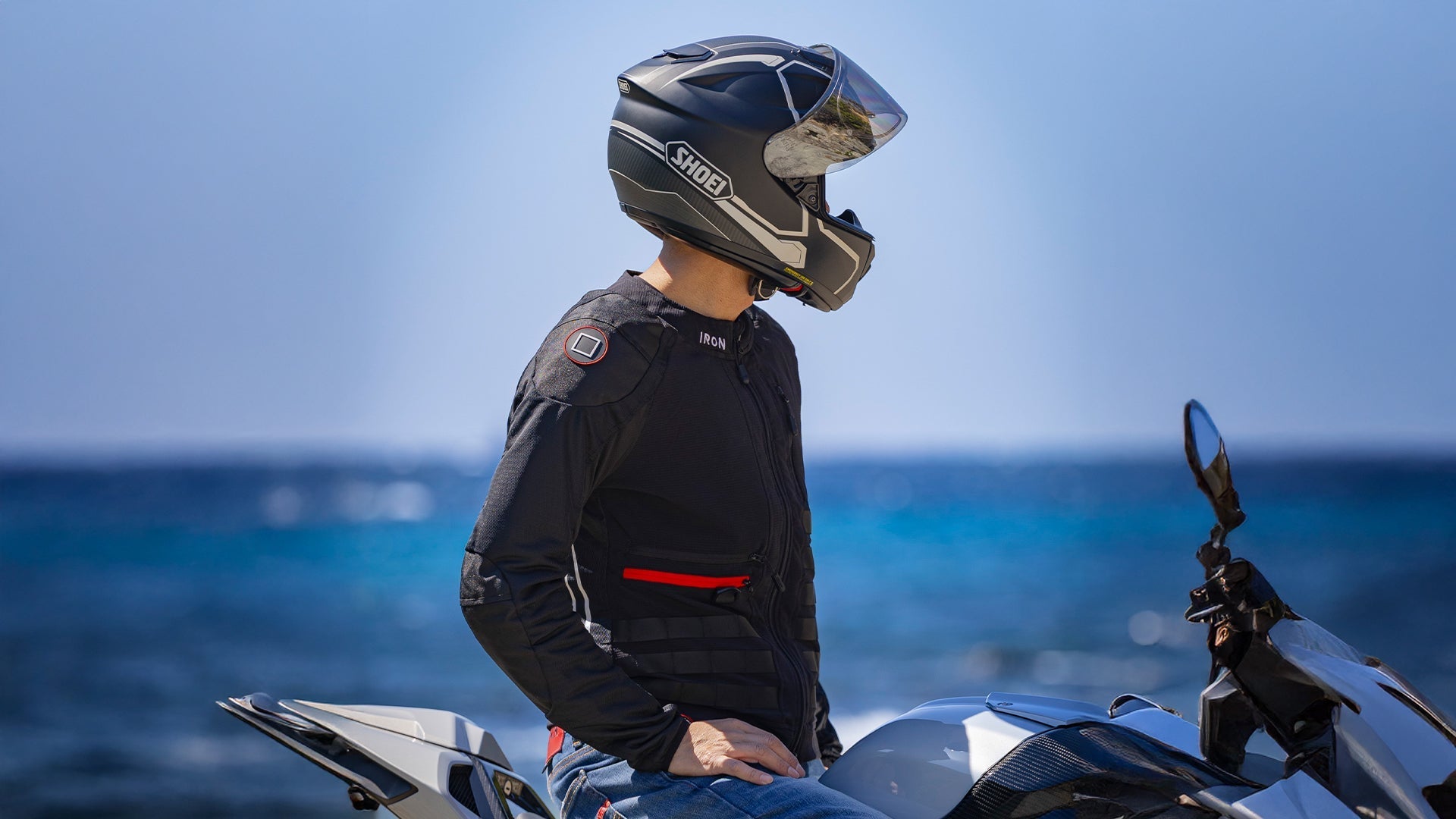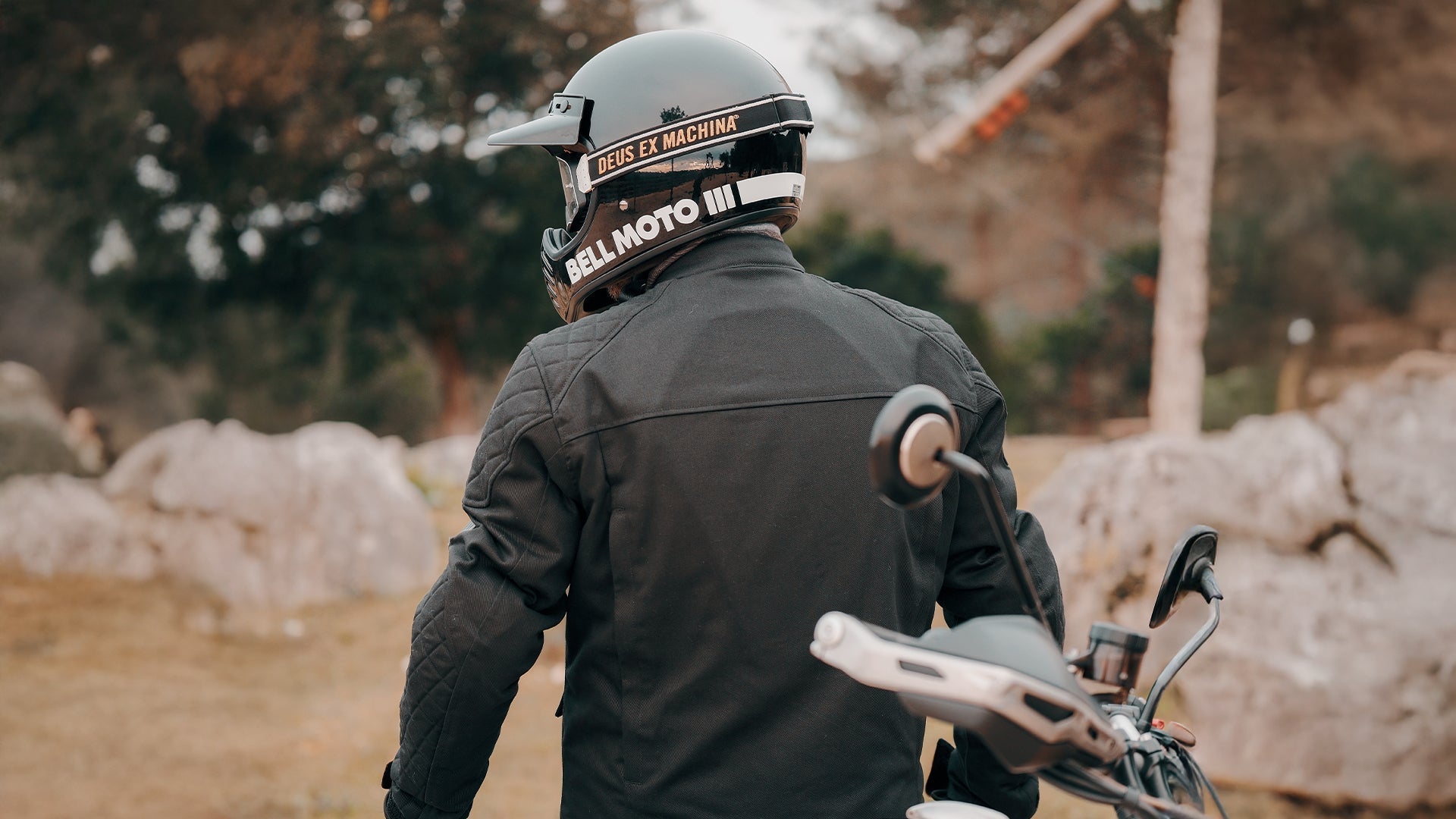If you depend on your motorcycle to carry you through rainy weather, it’s important to have the right waterproof riding shoe as part of your gear. The right footwear keeps your feet dry, enhances safety with reinforcement, and improves traction on wet surfaces.
In this guide, we’ll cover features to look for in waterproof riding shoes along with some of our top picks. The best options offer a balance of water resistance, breathability, and impact protection.
Key Takeaways
- Key features include a water-resistant outer shell, waterproof membrane, reinforcements, and non-slip soles.
- Look for boots that meet safety standards for impact resistance and abrasion resistance.
- Regular cleaning and inspection are important for maintaining the waterproofing and longevity of motorcycle riding shoes.
Why Waterproof Motorcycle Riding Shoes are Essential
Waterproof motorcycle riding shoes are important for your safety, comfort, and protection against the elements. Waterproof boots help you avoid discomfort and potential health problems like trench foot or fungal infections if you ride often in wet weather.
Waterproof riding boots are also built to protect your foot in many other ways. They incorporate reinforced toe boxes and ankle support, reducing injury risk during accidents. Enhanced traction on wet surfaces also improves bike control.
Key Features To Look for in Waterproof Riding Shoes
As you shop around, look at important parts like the outer shell material, waterproof membrane and safety reinforcements.
Outer Shell
The outer shell is the firs defense to shield your feet from moisture and environmental factors. Materials like full-grain leather or synthetic alternatives like polyurethane and TPU provide water resistance while maintaining flexibility. Seamless or minimal-seam designs reduce potential entry points for water.
Waterproof Membrane
Waterproof membranes are the key technology behind effective water-resistant riding footwear. These specialized barriers employ microporous structures to block liquid water while allowing water vapor to pass through, ensuring riders' feet stay dry and comfortable. High-performance membranes use materials with precisely engineered pore sizes to achieve this balance.
Safety Reinforcements
Waterproof riding shoes incorporate reinforcement zones to enhance protection, durability, and safety for riders. These zones, strategically placed in high-wear areas like the toe box, heel counter, and ankle support. Motorcycle shoe manufacturers use materials like thermoplastic polyurethane (TPU), carbon fiber, and high-density nylon to add rigidity and structure.
Our Top Pick for Waterproof Riding Boots: XZ007
The Waterproof Riding Boots XZ007 offers top-tier protection and style for motorcycle enthusiasts. These high-top shoes feature a waterproof layer and unique zipper design, which makes it easy to get in and out of the boot. The shoes come with a distressed look, which means they fit right in on a motorcycle.
Technical specifications include a reinforced toe cap with ultra-fine fiber gear shifter pad, PP shell protection for ankle and heel, and a slip-resistant, abrasion-resistant rubber outsole. Reflective heel strips enhance nighttime visibility.

What Are the Different Types of Waterproof Motorcycle Riding Boots?
As you shop around, you’ll find different options for motorcycle footwear that can stand up to rain and wet environments.
- Adventure/Touring: Designed for long-distance riding and off-road use, offering a balance of protection and comfort.
- Sport and Racing: Focused on performance and protection for high-speed riding and track use.
- Cruiser: Styled for comfort and casual wear, often with a classic or vintage look.
- Dual-Sport: Versatile boots suitable for both on-road and off-road riding.
- Street or Urban: Designed for everyday use, blending style with basic protection.
- Motocross: Specialized for off-road riding with enhanced protection and flexibility.
- Winter/Thermal: Insulated boots for cold weather riding.
- Touring or Commuter: Focused on comfort for long rides or daily use, with waterproof features.
- ADV/Enduro: Rugged boots designed for adventure riding in various terrains.
Riding shoes are the best choice if you want something that fits with street or urban style while providing good protection for riding. Be aware that you’ll have fewer options if you need 100% waterproof shoes as many options are simply water resistant.
How To Choose the Right Waterproof Motorcycle Riding Shoe
So how do you pick the right riding shoe? Consider the type of riding you do, how frequently you ride, and your average riding conditions.
Type of Riding
Waterproof motorcycle riding shoes should be selected based on your preferred style and typical riding conditions. If you’re more of a sports rider, you might want footwear with reinforced toe boxes, ankle protection, and excellent grip for precise control. Touring enthusiasts could use comfortable riding shoes featuring waterproof membranes and ample cushioning for extended journeys. And if you’re an urban commuter, you may prefer low-cut shoes that balance protection and walkability.
Riding Frequency
Riding frequency plays a big part in the type of waterproof motorcycle footwear you’ll want. Daily commuters and frequent riders should invest in high-performance boots constructed with resilient materials and advanced moisture management systems. These options offer superior protection against persistent exposure to road conditions and weather elements.
Weekend warriors and occasional motorcyclists may find mid-tier waterproof options suitable for their needs. While less robust than their high-end counterparts, these boots still provide adequate safeguarding and comfort for sporadic excursions.
Riding Conditions
Finally, think about how much rain you’ll ride through to decide the right level of waterproofing. Maybe a water resistant shoe would work fine in your situation, for example. This could be the case if your area has moderate precipitation and you prefer riding on clear days.
On the other side, if you rely on your bike for commuting in a rainy city, you’ll be riding through a lot of moisture. Plus, you’ll make frequent stops and may step in a few puddles. In this case, you’ll need a fully waterproof shoe you can depend on.
What Safety Considerations Apply to Waterproof Riding Shoes?
When considering safety features for waterproof riding shoes, you'll want to look for CE certification, which guarantees they meet European safety standards.
Impact protection, particularly around the ankles and toes, is essential for safeguarding against potential collisions. Prioritize shoes with visibility-enhancing reflective elements and anti-twist soles that provide stability and prevent ankle injuries during a fall.
CE Certification
Waterproof riding shoes with CE certification provide essential safety features for motorcyclists in the European market. The certification, based on the European Union's Personal Protective Equipment Regulation, ensures footwear meets strict protective standards.
The certification process involves rigorous testing, including:
- Impact resistance evaluation for toe and heel protection
- Abrasion resistance assessment of upper, sole, and side materials
- Structural rigidity testing to prevent crushing injuries
These evaluations simulate real-world accident scenarios, offering riders confidence in their protective riding shoes. CE-certified motorcycle boots must also meet specific water resistance requirements, ensuring dry feet in various weather conditions.
Impact Protection
Waterproof riding shoes prioritize impact protection to safeguard motorcyclists' feet and ankles during accidents or collisions. Reinforced components, including toe boxes, heel cups, and ankle supports, absorb and distribute impact forces effectively. Advanced materials like high-density foam, gel inserts, and air cushioning systems enhance shock absorption capabilities.
Riders should seek models with internal or external ankle protectors made from rigid plastics or composite materials to prevent excessive joint movement during impacts. Reinforced soles with non-slip treads provide crucial traction and stability, minimizing slip and fall risks.
Visibility
Visibility-enhancing features are crucial for rider safety in waterproof riding shoes, especially during low-light conditions or bad weather. Reflective elements strategically placed on the footwear increase the rider's visibility to other road users.
Effective safety designs incorporate reflective strips along the heel and sides, retroreflective logos or branding elements, and luminous or glow-in-the-dark accents on the sole. These visibility-boosting components work in conjunction with other riding gear to create a comprehensive safety system.
Anti-Twist Soles
Anti-twist soles increase safety in waterproof riding shoes by providing stability and preventing foot rotation during impacts or sudden movements. In other words, your foot stays on the pegs, reducing injury risk during jolts or collisions.
Key features of anti-twist soles include:
|
Feature |
Function |
|
Tread Pattern |
Maximizes traction on footpegs |
|
Reinforced Edges |
Prevents sole deformation |
|
Stiff Midsole |
Resists twisting forces |
|
Shank Insert |
Provides longitudinal stability |
Tread patterns, crucial for footpeg contact in wet conditions, utilize durable, high-friction rubber compounds for excellent grip. Reinforced edges and stiff midsoles collaborate to resist lateral forces that could cause foot slippage. Shank inserts, typically made of rigid materials like nylon or steel, run along the sole's length, offering additional stability and preventing longitudinal twisting.
How To Care for Riding Shoes
To maintain your waterproof riding shoes, you'll need to focus on three key areas: cleaning, conditioning, and inspection.
Cleaning
Proper cleaning and maintenance are essential for preserving waterproof riding shoes. Begin by removing debris with a soft brush or damp cloth. Use eco-friendly cleaners for stubborn stains, applying them gently with a sponge. After cleaning, restore the waterproof coating with a specialized spray or cream. This process maintains water repellency and extends the shoes' lifespan.
Conditioning
Conditioning waterproof riding shoes is essential for prolonging their lifespan and maintaining their protective properties. The process begins with cleansing and drying the footwear thoroughly. A specialized waterproofing agent, tailored to the shoe's material composition, should be applied using a soft applicator. The conditioner should be worked into the entire surface, with particular attention given to high-stress areas and seams.
For leather footwear, a nourishing balm or lubricant designed for animal hide can prevent desiccation and fissures. Application should be conservative to avoid clogging the material's pores.
Synthetic footwear benefits from a silicon-based treatment that preserves breathability.
Inspection
Regular inspection and maintenance of riding footwear are crucial for rider safety and equipment longevity. Look at your boots or shoes before and after each use, focusing on key components such as outsoles, uppers, and waterproof barriers. From time to time, test the shoe’s durability. You can try flexing the sole for loss of rigidity and test the waterproof shell.
Best Waterproof Riding Shoes: Conclusion
By now you have a good understanding of waterproof motorcycle riding shoes. Remember to prioritize key features like waterproofing, breathability, and protection when selecting your pair.
Always consider your riding style and terrain when choosing between different types. Of course, don't forget to maintain your shoes properly to extend their lifespan.
With the right waterproof riding shoes, you'll be prepared for any weather conditions you encounter on the road.
Waterproof Motorcycle Shoes: FAQ
Below are a few frequently asked questions about waterproof riding shoes.
How long does the waterproof coating on riding shoes typically last?
You'll find the waterproof coating typically lasts one to three years with regular use. However, coating maintenance is essential. You should reapply waterproofing treatments annually or whenever you notice reduced water repellency to maintain ideal performance.
Are there any disadvantages to wearing waterproof riding shoes?
There can be some disadvantages with fully-waterproof footwear. For example, breathability issues can lead to increased foot perspiration. The impermeable barrier that keeps water out can also restricts air circulation, potentially causing discomfort during extended wear or in warmer conditions.
Can I resole my waterproof riding shoes if the tread wears out?
You can explore resole options for your shoes, but it's challenging with waterproof models. The waterproof membrane complicates the process. Consider consulting a specialist cobbler or contacting the manufacturer for specific guidance on resoling your particular pair.
Do waterproof riding shoes come in wide or narrow sizes?
You'll find various fit options available for riding shoes. Many manufacturers offer wide and narrow sizes to accommodate different foot shapes. Check product specifications for specific width designations like "E" for wide or "B" for narrow.




